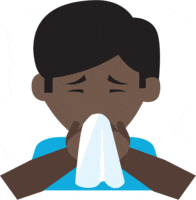Metric Measurement Word Problems Worksheets
Measurement word problems are some of the trickier types of word problems because they involve a large number of considerations. We suggest that thoroughly outline how you will solve these types of problems before you dive into the math. Make certain that your answer is in the proper units of measure that were indicated to you in the problem. Take your time and convert your units properly as you move through. In this section we model how to work through these types of problems and provide you with a good strategy for approaching metric focused problems. A series of worksheets complete with measurement word problems that have metric units of measure.
Aligned Standard: 5.MD.A.1
- Step-by-Step Lesson- Jerry might be spending too much time at the fish market, if he is a Sushi chef.
- Guided Lesson - It's all about the length of Jack's lacrosse bag, John's hockey stick, and Alice's poster.
- Guided Lesson Explanation - We show students how to create proportions that will lead them to a world chemistry math strategy.
- Measurement Operation Word Problems - Every sentence is needed her to handle these problems.
- Adding and Subtracting Measurements Word Problems - These problems add a great deal of text to give the students maybe too much context.
- Answer Keys - These are for all the unlocked materials above.
Homework Sheets
Each homework is dedicated to a specific form including area, capacity, mental math, volume and perimeter.
- Homework 1 - Greg has a yard that is 6 meters long and 5 meters wide. Brittany has a yard that is 4 meters wide and 6 meters long. Each person wants to plant a garden that takes up half their yard. Who will have the biggest garden? How big will it be?
- Homework 2 - A scientist is mixing dangerous chemicals in the lab. He needs to make more than one mixture. The first chemical bottle holds 15 deciliters of solution. If each mixture takes 7 deciliters of solution, how many mixtures can the scientist fill with the exact amount? What amount of the solution will be left over?
- Homework 3 - A wooden pencil weighs 22 grams. If I had 44 kg of the right kind of wood, how many pencils could I make?
- Homework 4 - We have to compare the lengths of insects in Science class. The following chart shows each insect measured and its length. Which insect is the longest in cm?
- Homework 5 - Liters (L) and milliliters (mL) are both ways to measure volume in the metric system.
Practice Worksheets
The practice sheet section reinforces the concepts of all forms of measurement. We are missing length though.
- Practice 1 - The new pool is 9 meters wide and 6 meters long. The pool next door is 10 meters wide and 5 meters long. Which pool is larger?
- Practice 2 - Sarah has two sisters. Her younger sister is 1/2 her weight. Sarah's older sister weighs twice as much as she does. If Sarah weighs 55 kg, how many grams does each sister weigh?
- Practice 3 - To raise money for a good cause we are walking as a team. There are four team members who get $5 each for every kilometer walked. If each team member walked 50,000 m, how much money would they raise?
- Practice 4 - Martin lives near a beautiful dog park. Each day he takes his dog Sparky for a walk around the edges of the park. The park is a perfect square. If one side of the park is 22 m long, then what is the perimeter of the park?
- Practice 5 - I drank a glass of soda with dinner. Was it more likely to contain 20 L or 20 mL of soda?
Math Skill Quizzes
Besides this general topic, there are many specific topics different to measures on the site. Give a quick search to find them.
- Quiz 1 - I bought soda for my party. Each bottle holds 2L of soda. If each cup holds 8mL of soda how many cups can I completely fill with three bottles of soda?
- Quiz 2 - I have to load a trailer with wood to burn during the winter. My trailer can hold 90kg of wood safely. If each piece of wood weighs 900g each, how many pieces can safely fit on the trailer? Remember not to go over the weight limit.
- Quiz 3 - Dean has a new car that is 5 meters wide. His parking space at work is only 0.8 dkm wide. Will his new car fit? How much room will he need or have left over?
- Quiz 4 - Sandy is building a tiny fence for her fairy garden. She doesn’t want to build too much so she must measure the perimeter of the garden. The garden is built in a perfect square, just as the fairies like it. It has one side that is 34 cm long. What is the perimeter?
A Step-by-Step Example

Example Problem - I hate being sick, but I have a cold. The medicine says I need to take 2.5 mL every 8 hours. How many liters will I need for 24 hours?
Explanation
Step 1 - Planning: We need to start by thinking through everything it is asking us and paying attention to the units of measure that we have and where they need to be when we provide a solution. We should note two things here the units of volume change from milliliters to liters and the units of time (hours) stay the same. So, we will need to convert the volume of the liquid from milliliters to liters at some point.
Step 2 - How Much Medicine: We know that we need to take 2.5 ml every 8 hours. 24 hours divided by 8 hours is 3. This means that we will take 3 doses of 2.5 ml or 7.5 ml (3 x 2.5) total.
Step 3 - Convert Units: We need to answer our final solution in units of liters. We will need to convert 7.5 ml to liters. There are 1,000 milliliters in a liter. This means that we would move the decimal point three places to the left or 0.0075 l.
How to Identify Units of Metric Measures

The metric system of measurements came into existence ever since the people felt the need to systematically measure the magnitude of quantities. There are different metric units to measure different quantities, such as gram is used to measure mass, the meter is used to measure length, etc. To distinguish the units of different quantities is easy, every quantity has been assigned a separate set of units. However, how to identify different units that pertain to a common quantity?
There are cases where a category of a physical quantity can have subcategories to it. For example, the category of distance and space can have three subcategories to it; linear distance or unidimensional length (measuring how long something is), two-dimensional length (often about the area of something), and three-dimensional length that tells the volume of an object. People often find it confusing to identify what type of unit should be applied in each case. Also, every unit is not suitable in any situation.
Addressing the problem of what to use in uni, bi, or tri-dimensional scenarios, a unit raised to the power of one must be used in the case of unidimensional length. For example, a meter or centimeter can be used to measure length. Whereas in the case of measuring area of a figure, meter or centimeter can be raised to a power of two and three in the case of measuring volume. This is how the units of different categories of metric measures are identified.